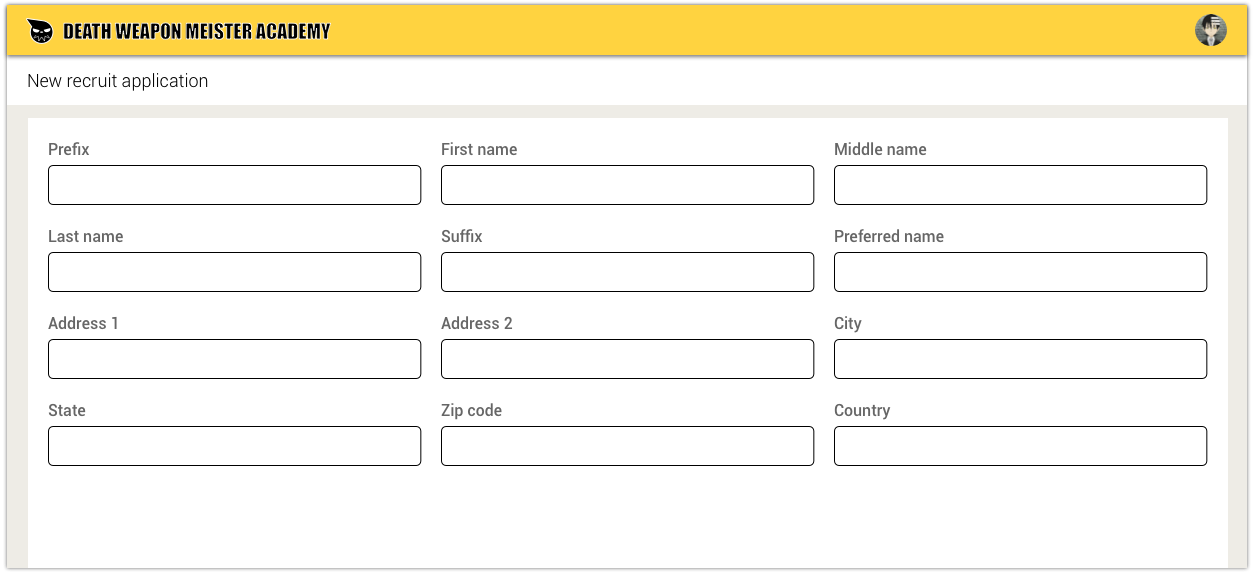美学设计评价
In the popular anime series, Soul Eater, Death the Kid is a Shinigami (Japanese death god) who vanquishes evil with his dual pistols, Liz and Patty. Although he’s strikingly powerful, his battles are often hindered by his obsessive-compulsive need for symmetry; Kid is unable to hurt perfectly symmetrical enemies, unable to focus on a chase when passing beautiful symmetrical objects, and is paralyzed in disgust by the sight of extreme asymmetry.
在流行的动漫系列《噬魂师》中,“小孩子的死神”是Shinigami(日本死神),他用双手枪Liz和Patty战胜了邪恶。 尽管他非常强大,但他的战斗常常因他对对称性的强迫性需求而受阻。 Kid无法伤害完全对称的敌人,无法通过漂亮的对称物体时专注于追赶,并且由于极度不对称而厌恶地瘫痪。
This obsessive-compulsive tendency actually exists in all of us. Something in our brain tells us “Symmetry is good and we must always strive for it!”
这种强迫症倾向实际上存在于我们所有人中。 我们大脑中的某些事情告诉我们“对称性很好,我们必须始终为此努力!”
Throughout my work as a UX designer, I see this over and over again. Without thinking about it, people around me (clients, PMs, developers, etc.) instinctually ask for it in my designs.
在我作为UX设计师的整个工作中,我一遍又一遍地看到这一点。 不用考虑,周围的人(客户,PM,开发人员等)本能地在我的设计中提出要求。
“Can you center align that paragraph?”
“您可以将该段居中对齐吗?”
“Can you expand those input fields to fit the screen?”
“您可以扩展这些输入字段以适合屏幕吗?”
“Can you move this table header to the right to align with the section above?”
“您可以将此表格标题向右移动以与上面的部分对齐吗?”
However, symmetry often makes a poor user experience because our brains expect to scan content in a side-aligned (left-aligned for English readers) manner, like reading a book.
但是,对称通常会带来糟糕的用户体验,因为我们的大脑希望以侧对齐(对于英语阅读者为左对齐)的方式扫描内容,例如看书。
中心对齐与左对齐 (Center alignment vs. left alignment)
Center aligned text is often more visually appealing, but it can make the content difficult to read if there is more than a sentence or two.
居中对齐的文本通常在视觉上更具吸引力,但是如果多于一两个句子,则可能使内容难以阅读。

As represented by the purple arrows above, a user’s vision tends to search for the start of the next line based on the previous starting point.
如上方的紫色箭头所示,用户的视线倾向于基于前一个起点来搜索下一行的起点。
In the center aligned example, the user needs to find and process the start point of the next line. This extra subconscious step not only adds to the cognitive workload, but also feels unnatural.
在居中对齐的示例中,用户需要查找并处理下一行的起点。 这种额外的潜意识步骤不仅增加了认知工作量,而且感觉不自然。
对称与F形 (Symmetry vs. F-shaped)
More often than not, forms and tables developed for corporate enterprise software tend to be immensely complicated and long. By default, many enterprise software platforms (ex. Salesforce or Pegasystems) treat these behemoth piles of data with symmetrical multi-column layouts that stretch across the page to “make use of the white space” and to “avoid too much vertical scrolling.”
通常,为公司企业软件开发的表格和表格往往非常复杂且冗长。 默认情况下,许多企业软件平台(例如Salesforce或Pegasystems)使用对称的多列布局处理这些庞然大物的数据,这些布局跨页面延伸以“利用空白”并“避免过多的垂直滚动”。

There is an abundance of research that shows that single column forms are much more usable than multi-column ones mainly because:
有大量研究表明,单列表单比多列表单更有用,主要是因为:
- Multi-column layouts lack a clear sense of direction to lead users. This makes it harder to pick up momentum and adds to the cognitive load to determine the flow of information. 多列布局缺乏明确的引导用户的方向感。 这使得更难获得动量,并增加了确定信息流的认知负担。
- The lack of clear direction also causes users to skip fields. 缺乏明确的方向还会导致用户跳过字段。
- Users generally do not mind vertical scrolling. 用户通常不介意垂直滚动。

Stretching out forms and tables to fit the width of the screen is another common habit.
伸展表格和表格以适合屏幕宽度是另一个常见的习惯。

Although it aesthetically makes sense to add this symmetrical balance to pictures, it forces users to scan more real estate, which wastes time and, again, adds to the cognitive workload.
尽管在图片上添加这种对称的平衡在美学上是有意义的,但它迫使用户扫描更多的不动产,这既浪费时间,又增加了认知工作量。
A more user-friendly design would be to size the input fields according to the amount of data expected (rather than keeping the same size for symmetry’s sake) and to follow the F-shaped reading pattern, which is more similar to reading a book (left-right, up-down).
一种更人性化的设计是根据预期的数据量来调整输入字段的大小(而不是为了对称而保持相同的大小),并遵循F形阅读模式,这与阅读书籍更相似(左右-上下)。

There are many advantages to laying out data this way:
通过这种方式布置数据有很多优点:
- It drives the user’s attention in a clear direction, making it faster and easier to scan. 它可以沿清晰的方向吸引用户的注意力,使其扫描更快,更容易。
- The extra white space makes the screen feel less cluttered. 多余的白色空间使屏幕显得更整洁。
- Since the data is closer in proximity, there is less distance to scan, which makes less work for the user. 由于数据更接近,因此扫描距离更短,这对用户减少了工作量。
强迫症:强迫症设计 (OCD: Obsessive-compulsive design)
By instinct, most people will continue to believe that symmetry feels more correct unless they are asked to actually do side-by-side usability comparisons. Despite successfully convincing clients to change their designs to be less symmetrical and more usable, I find that they have a hard time internalizing this logic.
出于本能,大多数人会继续相信对称性会更正确, 除非要求他们实际进行并行的可用性比较 。 尽管成功说服客户将其设计更改为不太对称且更易用,但我发现他们很难理解这种逻辑。
In conclusion, the obsession with symmetry is an overrated aesthetic that is harmful to both usability and Shinigamis.
总之,对对称性的痴迷是一种高估的美学,对可用性和Shinigamis都有害。
Please don’t harvest my soul, Kid.
小子,请不要收获我的灵魂。
翻译自: https://uxdesign.cc/death-the-kids-unusable-design-aesthetic-260dcc81273e
美学设计评价
本文来自互联网用户投稿,该文观点仅代表作者本人,不代表本站立场。本站仅提供信息存储空间服务,不拥有所有权,不承担相关法律责任。如若转载,请注明出处:http://www.mzph.cn/news/275680.shtml
如若内容造成侵权/违法违规/事实不符,请联系多彩编程网进行投诉反馈email:809451989@qq.com,一经查实,立即删除!
)












![ecshop模板支持php,[老杨原创]关于ECSHOP模板架设的服务器php版本过高报错的解决方法集合...](http://pic.xiahunao.cn/ecshop模板支持php,[老杨原创]关于ECSHOP模板架设的服务器php版本过高报错的解决方法集合...)




